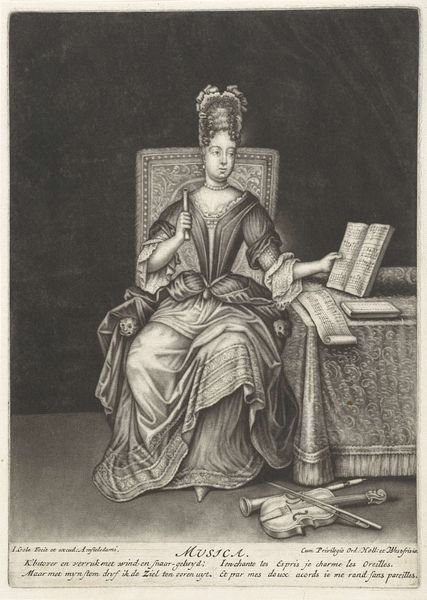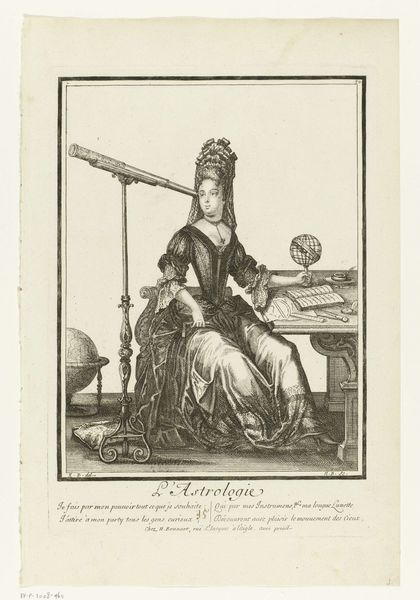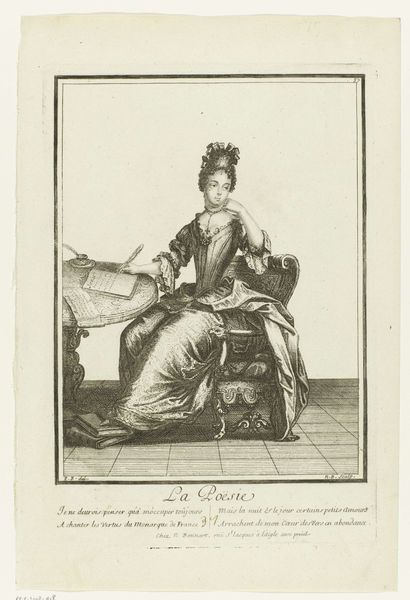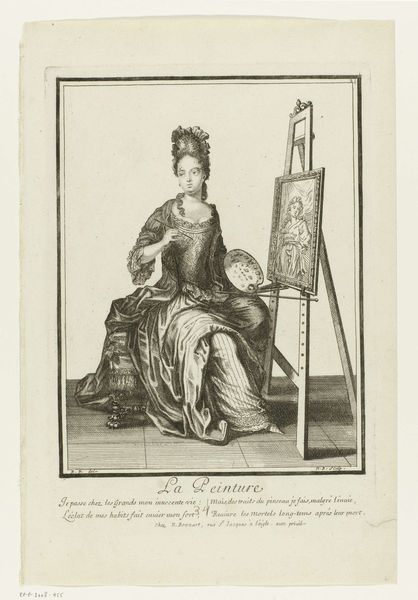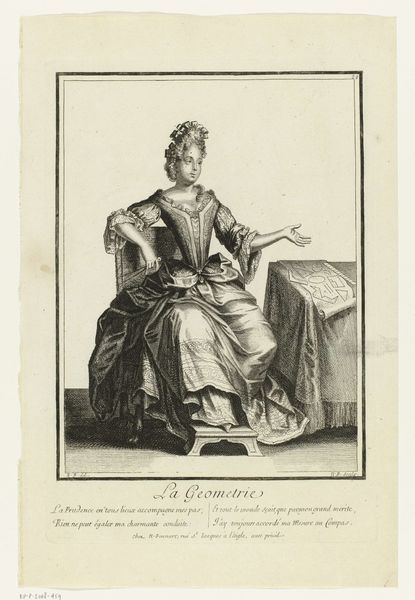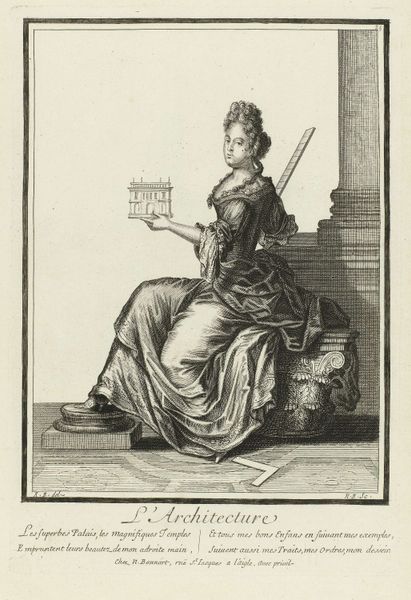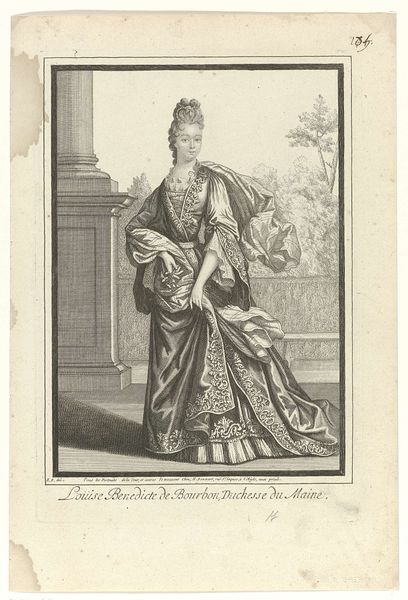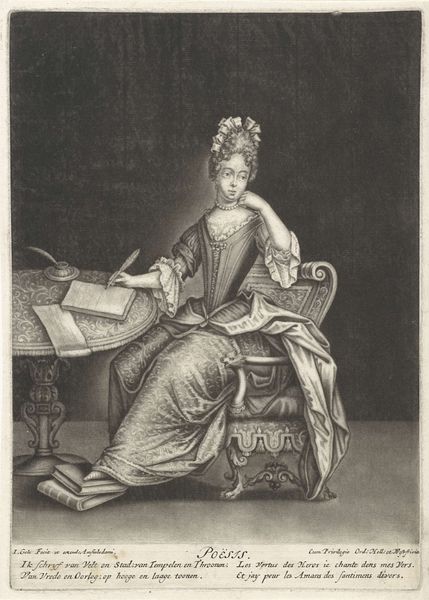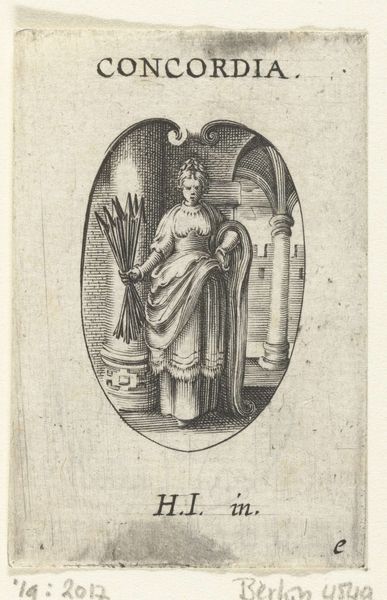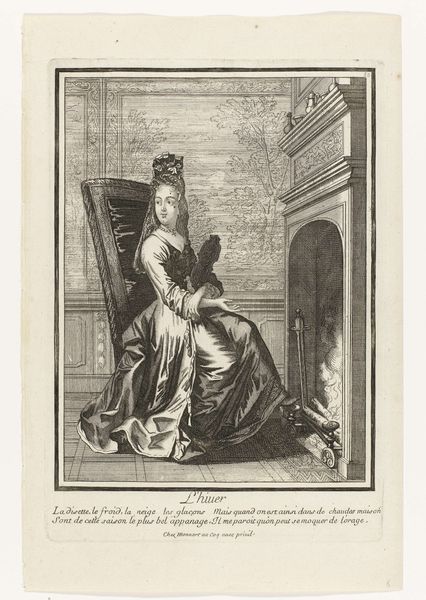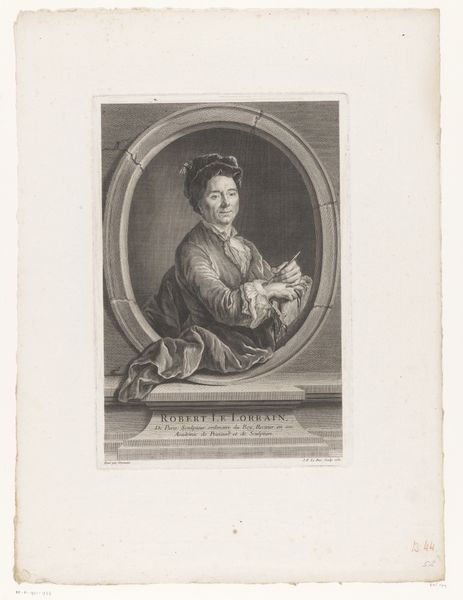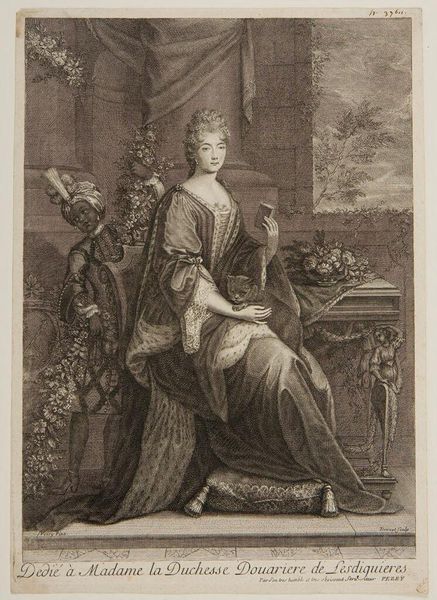
engraving
#
baroque
#
old engraving style
#
traditional media
#
line
#
genre-painting
#
history-painting
#
engraving
Dimensions: height 276 mm, width 189 mm
Copyright: Rijks Museum: Open Domain
Editor: So, here we have "Muziek," or "Music," by Nicolas Bonnart, an engraving dating from somewhere between 1647 and 1718. The fine lines and the detail in the woman's dress are pretty impressive. What stands out to you in this piece? Curator: The engraving itself as a material object speaks volumes. Think about the copper plate, the labor involved in its creation, the means of its reproduction and distribution. It wasn't just about artistic expression; it was a commodity, a form of accessible visual culture for a rising bourgeoisie. Editor: Accessible? But wouldn't this be relatively expensive compared to other forms of art at the time? Curator: That's a fair point, relatively speaking, but consider it in comparison to a commissioned painting, solely owned and displayed. Engravings allowed for broader circulation. The choice of "music" as the subject is significant, too. How were musical instruments and education in music viewed within the societal context? A violin casually discarded hints at the performance aspect and also the consumer culture surrounding the acquisition and display of instruments. Editor: That’s interesting, thinking of the violin as a status symbol. I was focused on the woman and the musical score, but the neglected instrument presents a new dimension. Curator: Precisely. And what about the act of creating the print itself? Engraving wasn't original art in the modern sense, it was reproductive labor. This engraving participated in the reproduction and circulation of ideas, values, and even class aspirations. It tells us a lot about the processes of artistic creation and dissemination during the Baroque period. Editor: I never really thought about it that way – the work and means that went into just making art accessible. Thanks! Curator: Absolutely. Examining the labor and the materials used in production is essential to fully appreciate and interpret a piece.
Comments
No comments
Be the first to comment and join the conversation on the ultimate creative platform.
